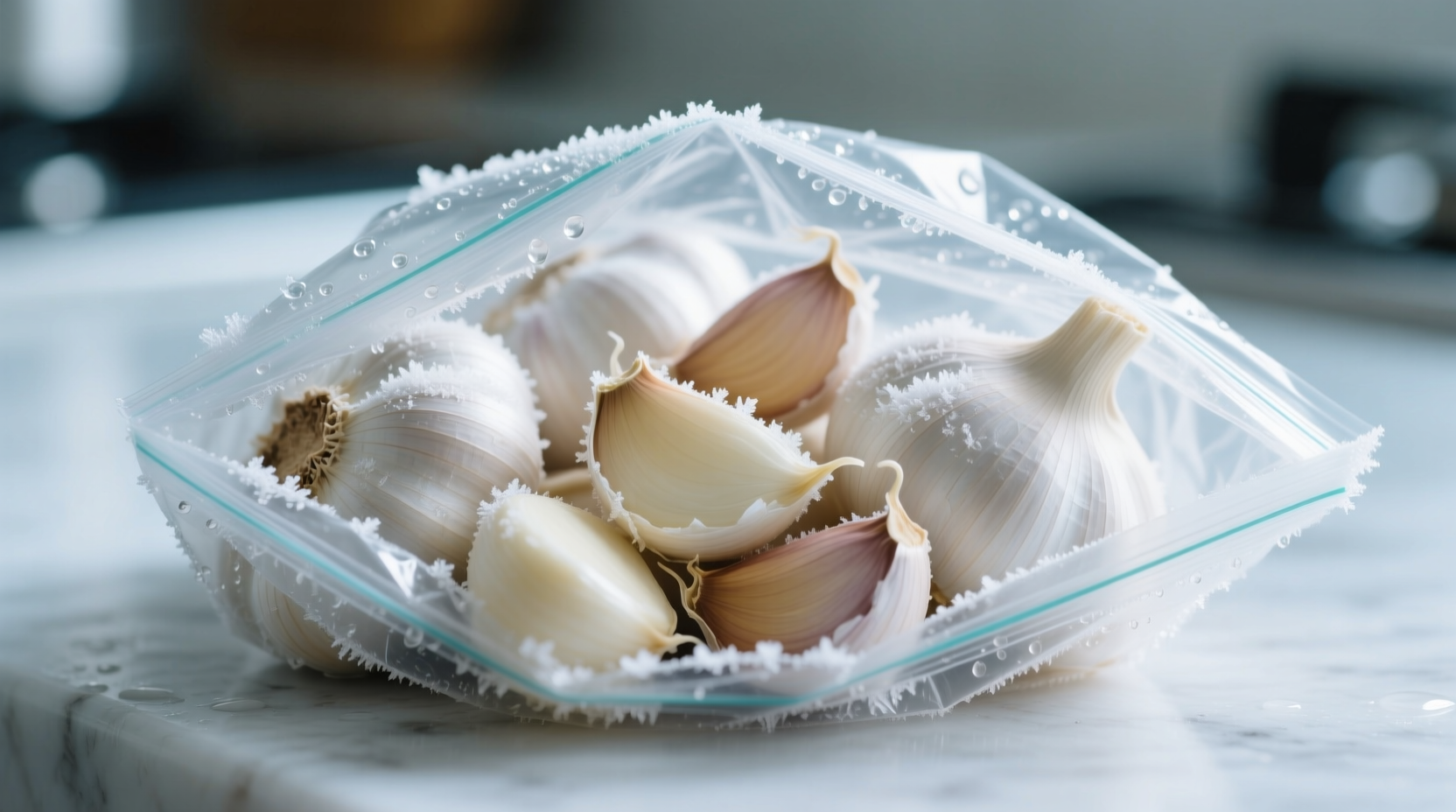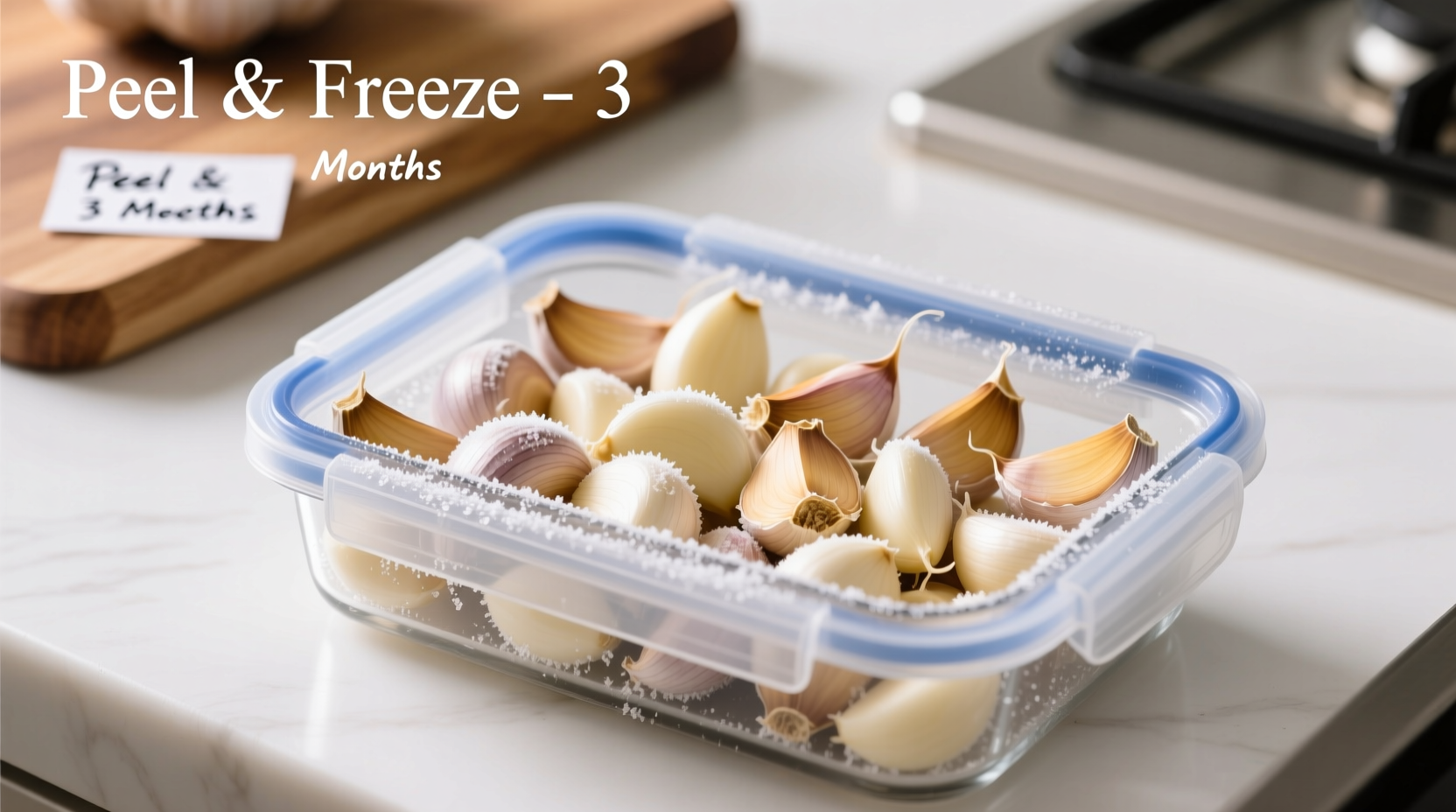Freezing peeled garlic transforms your meal prep routine by eliminating the daily chore of peeling cloves while maintaining flavor integrity. As a culinary professional who's tested preservation methods across hundreds of recipes, I've found freezing to be the most efficient way to maintain a ready supply of this essential ingredient without compromising quality.
Why Freezing Peeled Garlic Beats Other Methods
Unlike refrigeration (which only extends garlic's life by 1-2 weeks) or oil storage (which carries botulism risks), freezing preserves garlic's allicin content—the compound responsible for its distinctive flavor and health benefits—while eliminating food safety concerns. The USDA's Food Safety and Inspection Service confirms that freezing halts microbial growth completely, making it the safest long-term storage option for prepped garlic.
Step-by-Step Freezing Process for Maximum Quality
Follow this professional-tested method to freeze peeled garlic without texture degradation or freezer burn:
- Preparation: Separate cloves from bulb but keep skins intact during initial handling to prevent premature sprouting
- Peeling: Use the microwave method (10 seconds) or shaking technique in a sealed container for fastest peeling
- Drying: Pat cloves completely dry with paper towels—moisture causes ice crystals that damage cell structure
- Portioning: Divide into recipe-sized portions (1-3 cloves) based on your typical usage
- Packaging: Use one of these three professional methods:
| Method | Best For | Storage Duration | Texture Preservation |
|---|---|---|---|
| Airtight containers | Whole cloves | 10-12 months | Excellent (minimal texture change) |
| Freezer bags (air removed) | Minced or sliced | 8-10 months | Good (slight softening) |
| Oil immersion | Cooking applications | 4-6 months | Fair (softer texture) |
Quality Considerations: What Changes and What Stays Perfect
Understanding what happens during freezing helps set realistic expectations. When garlic freezes, ice crystals form in the cell structure, which affects texture but preserves flavor compounds remarkably well. The National Center for Home Food Preservation confirms that frozen garlic maintains 90% of its original flavor profile when properly stored.
Here's what you can expect:
- Texture: Thawed garlic becomes softer and loses its crisp bite—perfect for cooked dishes but unsuitable for raw applications like aioli
- Flavor intensity: Remains virtually identical to fresh when cooked (allicin converts to flavor compounds during heating)
- Color: May develop slight yellowing after 8+ months but remains safe to use
- Usage: Can be added directly to hot pans or pots without thawing

When Freezing Isn't the Best Option
While freezing works exceptionally well for most cooking applications, certain situations call for alternative approaches:
- Raw applications: For dishes requiring fresh garlic texture (salad dressings, bruschetta), refrigerate peeled cloves in olive oil for up to 2 weeks instead
- Long-term storage beyond 12 months: Dehydrated garlic powder offers better shelf stability (though with flavor compromise)
- Immediate use: If cooking within 3 days, store peeled cloves in water in the refrigerator to prevent browning
Professional Usage Tips for Frozen Garlic
Maximize your frozen garlic investment with these chef-tested techniques:
- Add frozen cloves directly to hot oil—they'll sizzle and cook within 30 seconds without steaming the pan
- For sauces and soups, drop frozen garlic into the liquid 5 minutes before completion
- Create garlic-infused oil by freezing minced garlic in ice cube trays with olive oil
- Label packages with harvest date—older garlic (over 6 months frozen) works best in strongly flavored dishes
Storage Timeline and Quality Indicators
Follow this quality timeline to ensure optimal usage:
- 0-6 months: Peak quality—indistinguishable from fresh in cooked applications
- 6-10 months: Slight texture softening but excellent flavor retention
- 10-12 months: Noticeable texture change but still safe and flavorful
- 12+ months: Increased risk of freezer burn and flavor degradation
Discard frozen garlic showing these signs:
- Excessive ice crystals throughout the container
- Strong sour or fermented odor upon opening
- Significant yellow or brown discoloration
Beyond Freezing: Complete Garlic Preservation Guide
While freezing delivers the best balance of convenience and quality, understanding all options helps you make informed decisions:
- Refrigeration in oil: Safe for 1-2 weeks but requires acidification (lemon juice/vinegar) to prevent botulism risk
- Dehydration: Creates shelf-stable powder but loses volatile flavor compounds during drying
- Pickling: Changes flavor profile significantly but creates a versatile condiment with 6-month shelf life
For most home cooks, freezing peeled garlic represents the optimal solution—combining safety, convenience, and flavor preservation better than any alternative method.











 浙公网安备
33010002000092号
浙公网安备
33010002000092号 浙B2-20120091-4
浙B2-20120091-4